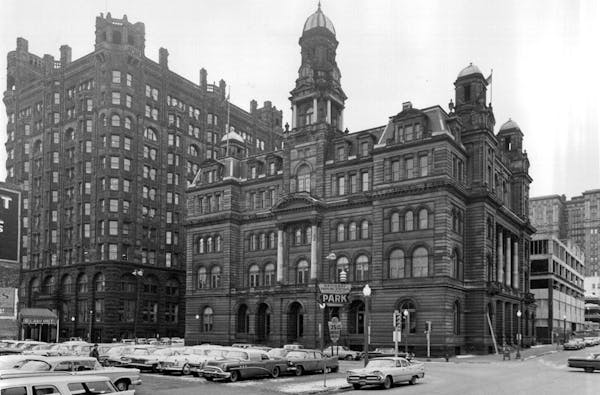Minnesota is home to the northern starting point of the Great River Road — the remarkable scenic highway that crosses 10 states as it follows the Mississippi River about 3,000 miles from Lake Itasca to New Orleans.
For decades, the Great River Road's familiar green and white ship's wheel signs have been part of every town along its more than 500-mile route through the state — including Bemidji, Aitkin, Hastings, Red Wing and Winona — but its history is little known.
The road is the legacy of a national movement that began in the 1920s to celebrate the independence and range of car travel. For generations, American cities turned their backs on the Mississippi, using it as a dumping ground.
But with the explosion of car ownership, automotive tourism created new markets for roadside lodging, camping equipment, service stations and local attractions. The sublime and scenic beauty of the Mississippi River bluffs, geology and ecologies now had real economic value for towns and cities.
Minneapolis and St. Paul were generations ahead of their time when they created some of the first scenic river roads in the late 19th century. Thanks to the foresight of early Twin Cities park planners, such as landscape architect Horace Cleveland, the formation of roads like the East and West Mississippi River Parkways preserved and highlighted the Mississippi's beauty.
Minnesotans also helped take the river parkway idea to a national scale.
In 1938, landscape architect Arthur Nichols helped found the Mississippi River Parkway Planning Commission, which was created at a meeting in Minneapolis.
Nichols had come to Minnesota in the early 1900s to design the landscape for the Glensheen mansion in Duluth. He and his partner, European-trained Anthony Morell, stayed here and went on to design the Seven Bridges along Duluth's Skyline Drive and many Minnesota landscapes and college campuses.
Conrad Wirth also promoted the idea of a national scenic road. Wirth, who was supervisor of recreation and land planning for the National Park Service and the son of lauded Minneapolis Parks Superintendent Theodore Wirth, advocated for a 2,000-mile parkway "through the heart of the Nation."
Before the road became a national scenic drive, roadside overlooks designed by Nichols already were being built along the Mississippi River on Hwy. 61. Constructed by the New Deal's National Youth Administration, the overlooks capitalized on scenic views and featured low indigenous limestone walls.
"Nichols was so good at choosing sites to highlight the landscape," said Carol Zoff, a landscape architect at the Minnesota Department of Transportation who manages planning for the Great River Road. "He created roadside infrastructure with native materials. You feel like each overlook or interpretive marker was intended to be there."
World War II put the Great River Road on hold, but only temporarily. In October 1949, President Harry Truman signed a bill to allocate $250,000 to survey the entire river corridor for the parkway. The study determined that instead of building costly new roads, the Great River Road would be a scenic route connecting and adapting existing roadways.
Nichols helped develop the master plan, which showed his belief in the integration of landscape architecture and road and bridge engineering, as well as his sense of local ecology and pragmatism in design. Unlike the interstate highway system, which was designed for speed, the Great River Road celebrates the contours of the land, local geology, stunning vistas and a slower method of travel, which is seeing renewed interest during the pandemic.
Landscape tourism
Interpretive centers along the Great River Road include the Forest History Museum in Grand Rapids, Science Museum in St. Paul and the National Eagle Center in Wabasha (more centers lie on Wisconsin's side of the route). Plus, of course, in Itasca, which is identified as the headwaters of the Mississippi, and has been a major tourist destination for decades.
As a true landmark of scenic and engineering design, the Great River Road can tell many stories. Many of its historical markers, built decades ago, interpret the land through the eyes and language of settlers who came here in the 19th century. Yet, there is little insight into how Native Americans experienced these settings, traveled through them, and found spirituality in the land. Telling these stories is needed, too.
Traveling the Great River Road in Minnesota reveals how ecological, social and economic regions fit together — how ecology transitions over space, and how natural history shapes a human history that is far older than we may know.
Frank Edgerton Martin, a landscape historian and writer, has written for Landscape Architecture and other magazines.








